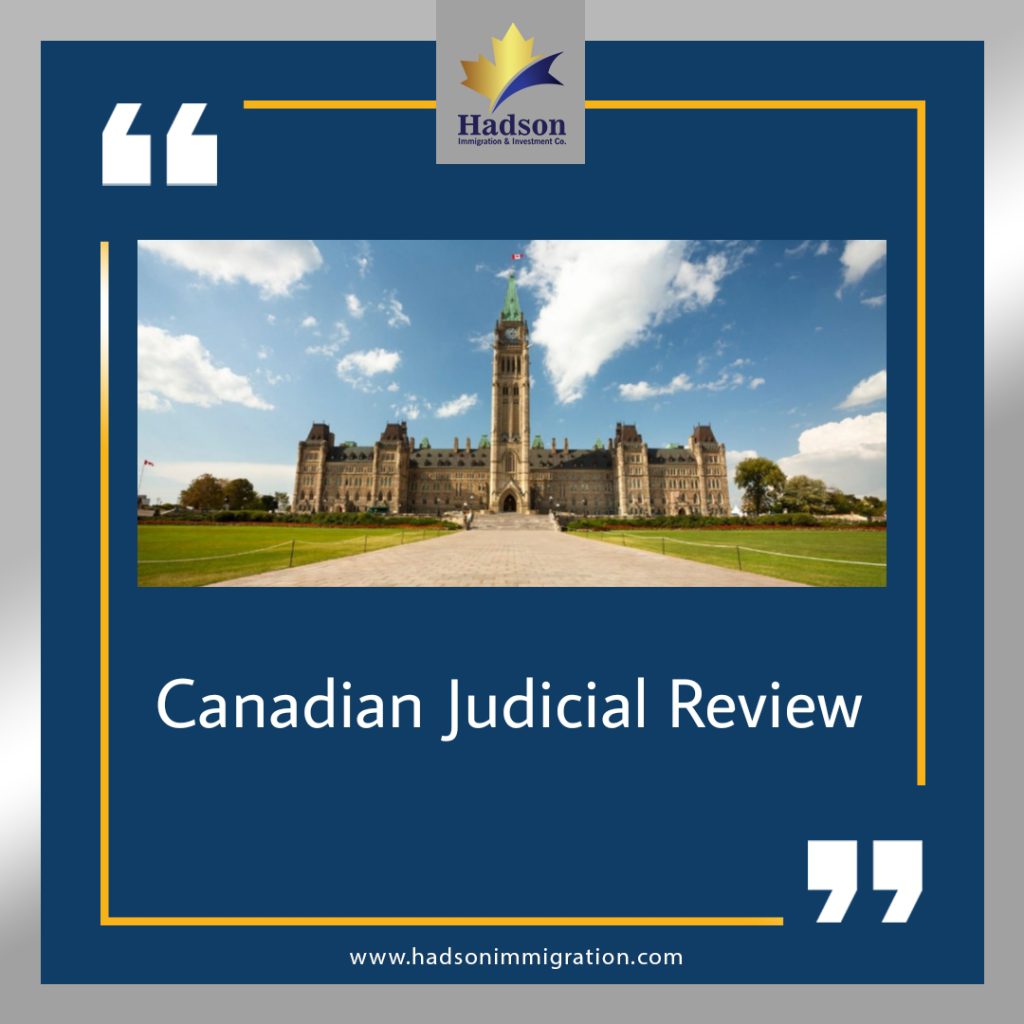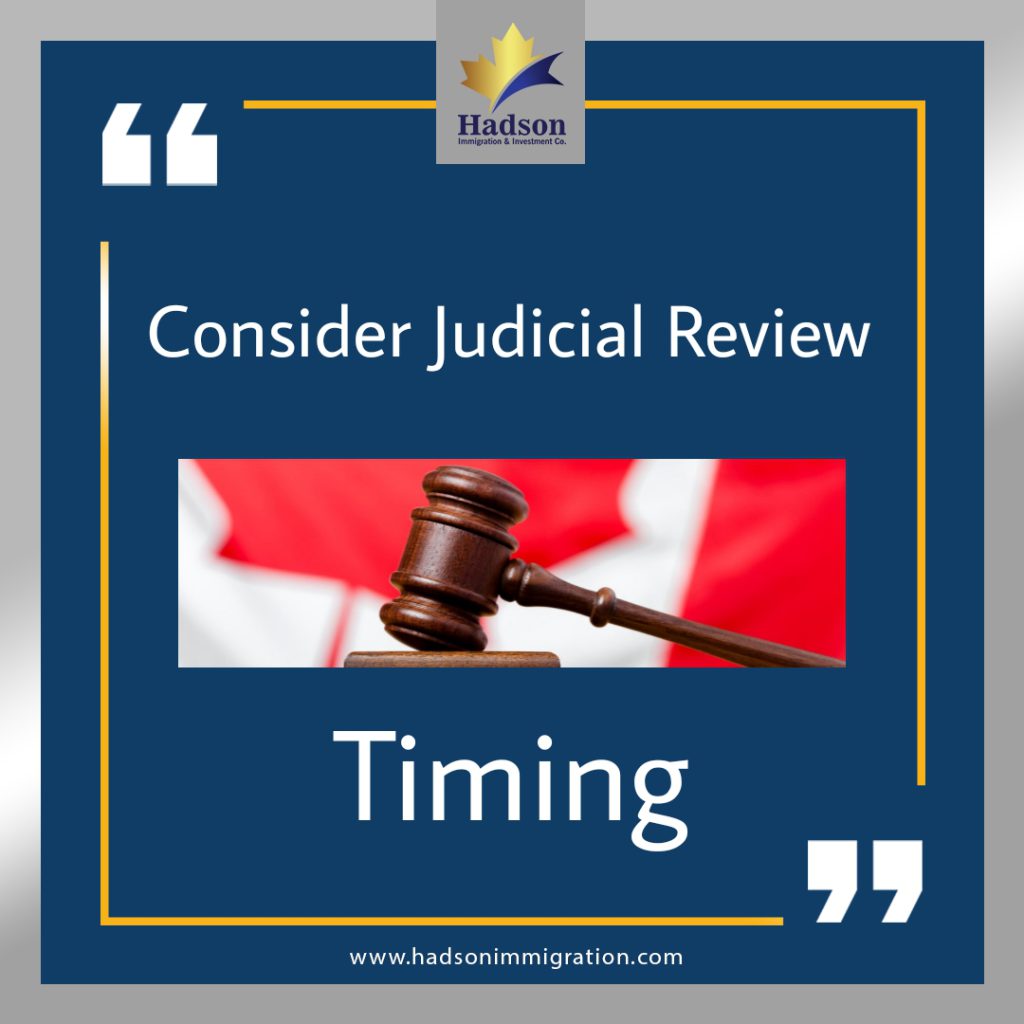What Is Judicial review in Canada?
In Canadian judicial review
is the process that allows courts to supervise administrative tribunals’ exercise of their statutory powers.
Judicial review of administrative action is only available for decisions made by a governmental or quasi-governmental authority.
In our highly regulated world, interaction with government bodies and agencies is inevitable. At the municipal, provincial and federal levels, administrative decision-makers have significant power over key approvals, licenses and policies, and their decisions can have a serious impact on businesses and individuals.
However, their powers are not without limits. Judicial review is the process by which affected parties in Canada can turn to the courts to review government action and determine whether it meets legal and constitutional standards.
Although administrative law in Canada is conceptually similar to that in the United States, the source, scope and focus of judicial review in the two countries differ in several important ways.

The process allows individuals to challenge state actions, and ensures that decisions made by administrative tribunals follow the rule of law.
The practice is meant to ensure that powers delegated by government to boards and tribunals are not abused, and offers legal recourse when that power is misused, or the law is misapplied.
Judicial review is meant to be a last resort for those seeking to redress a decision of an administrative decision maker
Canadian judicial review – key differences
- Administrative law in Canada is generally focused on administrative adjudication — challenging the exercise of statutory discretion as applied in a particular case.
This is in contrast to the U.S., where administrative law has largely developed around challenges to rules and regulations adopted by federal agencies.
- Both the provincial and federal courts hear applications for judicial review. The Federal Court hears most applications from decision-makers that get their powers from federal statutes and orders.
In contrast to the U.S. district and circuit court system, the Canadian federal court system has one Federal Court and one Federal Court of Appeal that hears cases on federal matters for all the provinces. The decisions of all other administrative bodies are reviewable in the provincial courts.
- Judicial review in Canada is governed by a common law standard of review analysis that is continually being developed in the courts, unlike in the U.S., where the Administrative Procedure Act governs the scope and standard of federal judicial review.
- There is no Canadian equivalent to the U.S. Administrative Procedures Act, which sets out uniform procedural standards that apply broadly to federal agencies.
Grounds for judicial review
In Canada, administrative law is focused on administrative adjudication — challenging the exercise of statutory discretion as applied in a particular case.
Although government policies and regulations are still subject to judicial review in Canada, most Canadian administrative law cases relate to the fair and reasonable application of statutes to individuals and organizations, rather than the broader policy choices of the government of the day.
Broadly speaking, government action in Canada may be challenged on two grounds. The first is “procedural fairness” or “natural justice,” or, as it is known in the U.S., “due process.”
In Canada, an administrative decision made by a public authority that affects someone’s rights, privileges or interests triggers a duty of fairness, which requires at minimum the right to be heard and the right to an unbiased decision-maker.
The second ground of review is the substance of the decision — what the government body decided and why. This is often the main reason a party seeks judicial review in court. A substantive challenge to the decision can be based on a number of different grounds, which are outlined in more detail below.
When to consider judicial review
Once the proceeding has concluded and a final decision is rendered, it is time to start considering judicial review. In the Federal Court, an application for judicial review must be brought within 30 days. Most provincial courts also have statutory time limits for bringing a judicial review.
In Ontario, British Columbia and Manitoba, which do not have time limits, a judicial review should be brought within a reasonable time, which depends on the circumstances. Missing a time limit or proceeding with undue delay may result in dismissal of the application.

Who can seek judicial review?
Standing, or eligibility to seek judicial review, varies depending on the jurisdiction and applicable legislation.
The two main avenues for standing to bring a judicial review application are through “personal interest standing” and “public interest standing.”
Personal interest standing applies to those who are individually affected or aggrieved by a government decision.
The party might be the subject of the decision, such as the applicant seeking the license or the individual subject to the disciplinary proceeding. The party could also be directly impacted by the decision, such as an organization directly affected by a regulator’s new policy.
To have personal interest standing, the applicant’s interest in the matter should be distinguishable from the public at large.
On the other hand, public interest standing allows a party who does not have a special interest in the matter to nevertheless challenge the decision in court.
To obtain this discretionary standing, the applicant must have a genuine interest in the matter, the issue must be justiciable, there must be a serious issue to be tried and the court must be satisfied that there is no other reasonable and effective way for the issue to be resolved.
Although public interest standing is difficult to obtain, it can be helpful to challenge government decisions that would not otherwise be subject to judicial oversight.
Common barriers to watch for
First, not all public body decisions are reviewable — if the decision is not of a sufficiently public character, or does not actually constitute an exercise of power, a court may decline jurisdiction.
In addition, judicial review is limited to the actions of decision-makers that exercise powers from the government.
It cannot be used to challenge the decisions of private associations, even those whose decisions have significant public impact.
Common barriers to watch for
Second, a court will generally not hear a judicial review until all alternative remedies within the administrative process are exhausted, so trying to bypass an administrative step through a court application is not likely to succeed.
Courts are reluctant to interfere with an ongoing administrative proceeding, so applications for judicial review of interim decisions made by the decision-maker will likely be dismissed for prematurity.
Remedies
If you are thinking about bringing an application for judicial review, first consider what you hope to get out of the proceeding.
The usual remedy on a successful judicial review application is to quash the decision and remit it to the government body to reconsider in accordance with the court’s guidance.
Depending on the circumstances, a party can also seek other types of relief against the government, such as a declaration of their rights or injunction restraining the conduct.
Important to note is that remedies on judicial review are generally discretionary.
Even where the applicant makes out a case on the merits, the reviewing court has an overriding discretion to refuse relief.
Applicants should also keep potential cost consequences in mind — the ordinary Canadian rule that a successful litigant is entitled to its costs applies equally in applications for judicial review.
However, costs are subject to the court’s discretion, and parties may ask for no costs be ordered against it in matters of public interest or other novel cases.
Conclusion
have produced with the Canadian courts typically taking a more deferential approach to the decisions of governmental bodies and agencies.
However, the government is still subject to clear procedural and substantive constraints, and judicial review can be an effective way to overturn problematic decisions and policies. Understanding these administrative law rights and remedies is crucial to effectively navigating the Canadian regulatory landscape.








